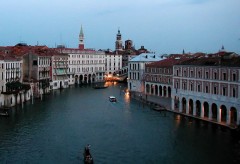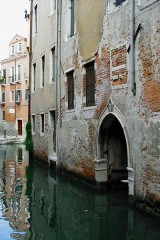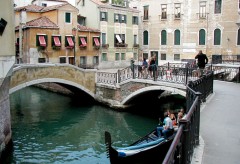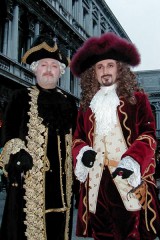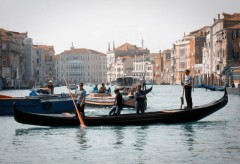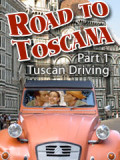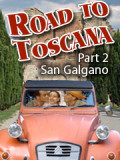Venice … Never Out of Fashion
Thanks to a mean spirited world that still values violence over thinking, travel has become more expensive and a great deal less pleasant than it needs to be. But a trip to the local mall is not very pleasant either and by the time you buy yet another pair of sneakers and more entertainment gadgets at the chain stores a few times, you could have booked a flight to Europe.
Of course you could go to Disney World or Las Vegas where they all speak English in fake environments built to look like a city such as Venice. But why not reel in those American fears of different languages and cultures and visit the real thing?
To some “experienced” American travelers, Venice is a cliche. But I have been to Venice no less than six times and in my humble opinion, the magic remains. In fact, when approached with the correct sense of romance and mystery, Venice is a city with enough raw imagination to wake the dead. Despite regular flooding and an influx of tourists so damaging that a past mayor of the city actually created an ad campaign to discourage one-day sightseers, Venice is remarkably clean. Historic preservation is alive and well with many of its wonderful buildings being cleaned and restored.
Does it smell bad? …
Yes, on occasion.
Can you drink the water? …
Not from the canals stupid.
Is the food good? …
Not if you follow tourists.
Do they speak English? …
Enough, but it is Italy.
Is there a McDonalds? …
Unfortunately, several.
Can I get a big American coffee? …
Order five espresso and make do.
What is the biggest “attraction”? …
Centuries of amazing history!
So why bother? Because you will learn something. For example, you should be able to see why American cities are looking so ugly and feeling less alive. Venice values itself and its history. Sure, it makes a lot of money on tourism by looking the way it does but that is a very simplistic and flawed rationale for explaining why it remains virtually as it was built over the centuries. To see the local residents darting from one small alley to another with briefcase or shopping bags in hand — steering well clear of the main tourist paths that lead to the amazing and often crowded square San Marco — you know that there is a day to day life in the city that is not simply played out for the sake of tourism.
One know-it-all American college student I met on the train to Venice commented that he had been there before and had the impression that it was all a charade for tourists, like Disney World where you never see two Mickey Mouses in the same place. He had concluded that nobody actually worked or lived there aside from the tourist industry. It must be noted that this bright example of American youth was also about to get off the train at the wrong station but that’s a different matter.
Upon leaving the station and walking towards our hotel I was unconsciously bothered by and still pondering his assessment of one of my favorite cities. Then I noticed a pet store within easy reach of our hotel’s entrance. Obviously this store was not in business for the tourists. Then a hardware store caught my eye and a baby furnishings store and a kitchen appliance store. No, this was in fact also a city for those that do live there and not simply a contrived environment for the exclusive benefit of the tourist! My young friend had apparently just followed the signs to San Marco and never ventured to explore or use his imagination.
Venice is a city built largely upon wooden pilings sunk into a sandy group of small islands along the lowlands shore of the northern edge of the Adriatic sea. Since well before the days of Marco Polo, it was a thriving trading center with ships from all over the Mediterranean seeking a market for their contents. Spaniards, Portuguese, Turks, Blackamoors, British, and others frequented Venice and the city retains a cornucopia of architectural elements begged, borrowed and literally stolen from other cultures.
Whenever I wander the narrow alleys of Venice, away from the main thoroughfares and hoping to lose myself, it is easy to see a man and woman whispering in the shadows. A ship’s captain with tri-cornered hat having an extravagant plumage rounds a corner somewhat intoxicated and heads off into the darkness for some unknown intrigue down another dimly lit alley. Even in San Marco, full of people dressed in t-shirts and sandals with cameras clicking and beeping, the grand processions and bustle of the waterfront with square masted ships lying at anchor and unloading their cargoes is very easy to imagine.
Hopefully I have piqued your curiosity and you will want to plan a visit, or perhaps you already have tickets and are here doing some research. You must promise however that when you do visit Venice, you must not simply add yourself to the throng of fast moving tourists who, lacking imagination, frequent the same chain stores they could find in any shopping mall and never walk slow enough or long enough to feel the mystery and romance of this amazing city.
Now, repeat after me … “I promise.”

